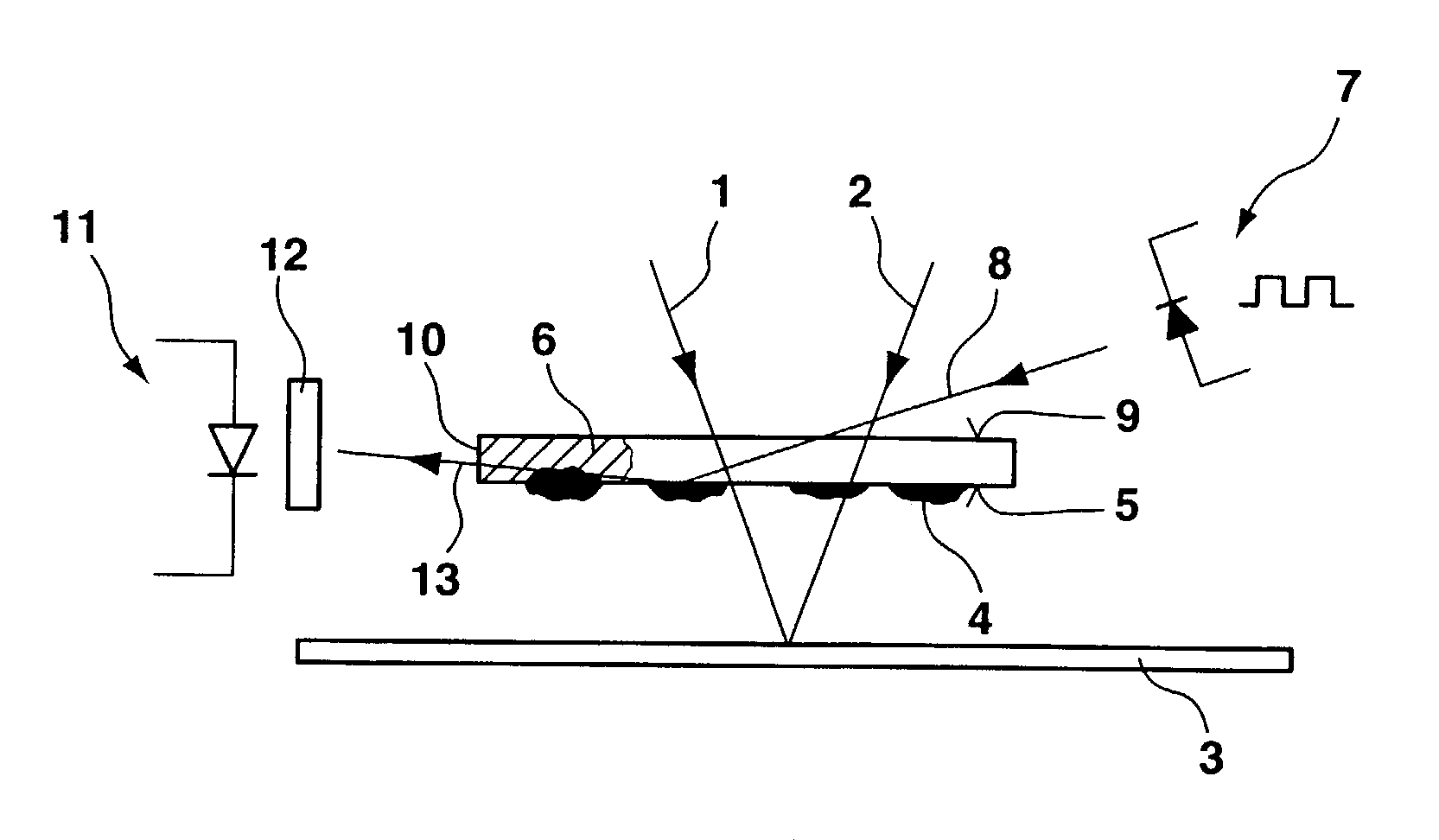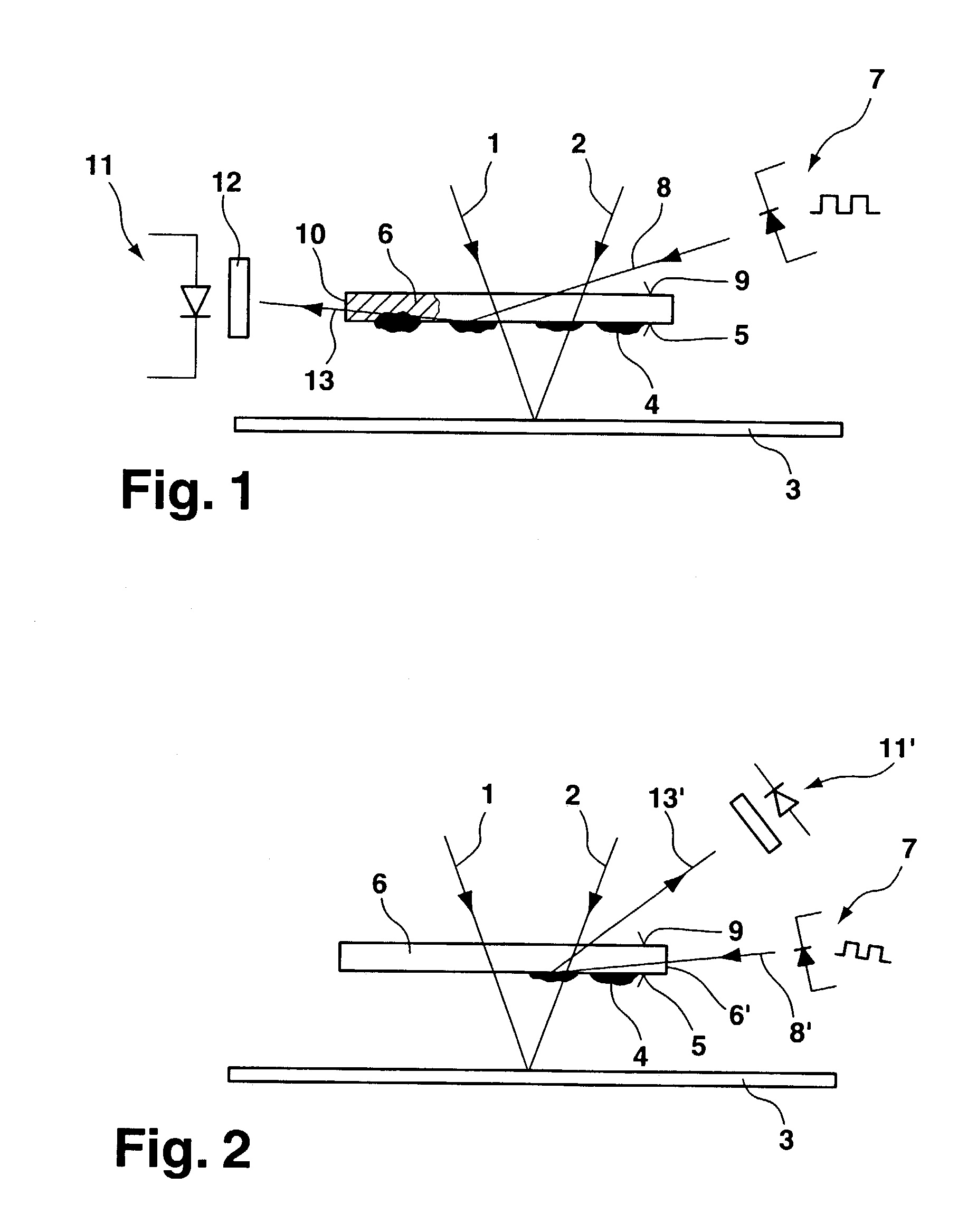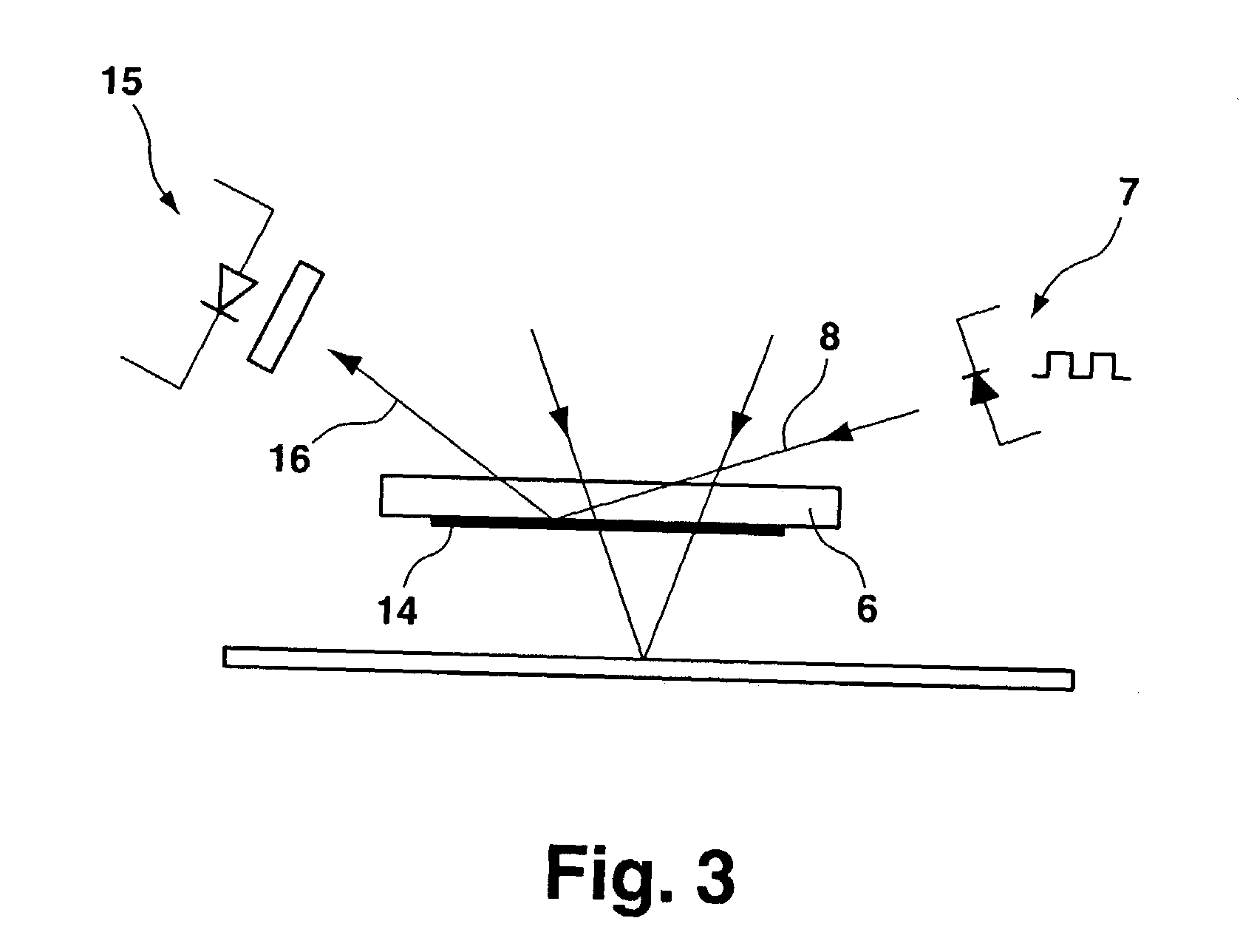Monitoring an optical element of a processing head of a thermal machine tool
- Summary
- Abstract
- Description
- Claims
- Application Information
AI Technical Summary
Benefits of technology
Problems solved by technology
Method used
Image
Examples
Embodiment Construction
[0018]It is desirable to further improve detection of soiling of the optical element of the processing head of a machine for thermal processing of a workpiece.
[0019]This objective may be achieved by using an apparatus to monitor an optical element of a processing head of a machine for thermal processing of a workpiece, in particular a laser processing machine, that includes a separate light source for coupling a light beam into the optical element on the optical surface facing away from a workpiece or on a lateral edge or on a lateral surface and a detector for detecting a light beam reflected or scattered in the region of the optical surface facing the workpiece. The relevant region of the workpiece includes the optical surface itself, the volume or material interior behind the surface and also particles deposited or burnt into this region. Soiling of the optical surface facing a workpiece can be detected and displayed independently of the process parameters. The optical element ca...
PUM
| Property | Measurement | Unit |
|---|---|---|
| Light | aaaaa | aaaaa |
| Optical properties | aaaaa | aaaaa |
| Proximity effect | aaaaa | aaaaa |
Abstract
Description
Claims
Application Information
 Login to View More
Login to View More - R&D
- Intellectual Property
- Life Sciences
- Materials
- Tech Scout
- Unparalleled Data Quality
- Higher Quality Content
- 60% Fewer Hallucinations
Browse by: Latest US Patents, China's latest patents, Technical Efficacy Thesaurus, Application Domain, Technology Topic, Popular Technical Reports.
© 2025 PatSnap. All rights reserved.Legal|Privacy policy|Modern Slavery Act Transparency Statement|Sitemap|About US| Contact US: help@patsnap.com



